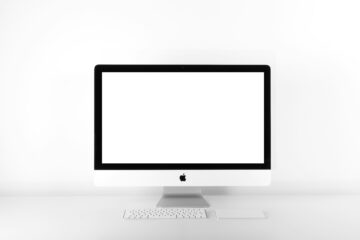
Say you have a client trying to transfer files to you with a thumb drive – doesn’t matter why. But your law firm runs on Macs and your client uses a PC running Windows and you get an error message when you try and plug the drive into your Mac.
What do you do (besides pulling out your hair of course)?
Preparing Your External Drive to Work on Both MacOS and Windows
To get your external drive to work on both Macs and PCs, there is a little prepwork that needs to be done first.
But before we even get to that, make sure to double check that the files are saved on the Windows PC and that the only copy isn’t just on the external drive. Otherwise, you will lose all of the files on the drive.
The reason is that we have to change the file system on the drive to one that is accessible to both MacOS and Windows. Long story, short – Windows drives are often using a NTFS file system and MacOS uses HFS. But by converting the drive to the exFAT file system, the files should be accessible on both MacOS and Windows.
Once you have the files backed up on a Windows computer (or save them to Dropbox or some other back-up tool), here are the steps –
- Connect the external drive to your Mac
- Open Disk Utility (you can hit command and the spacebar to open the search, then type in Disk Utility if you don’t know where it is).
- Select the external drive
- Click Erase (NOTE: this is why we said earlier that you need to have a backup of the files)_
- Name the drive’s partition and then select exFAT for the format. Then click erase.
- Reupload the files to the external drive, then they should be accessible via your Mac
This process can be confusing, so don’t hesitate to reach out if you are having any trouble getting this resolved.


